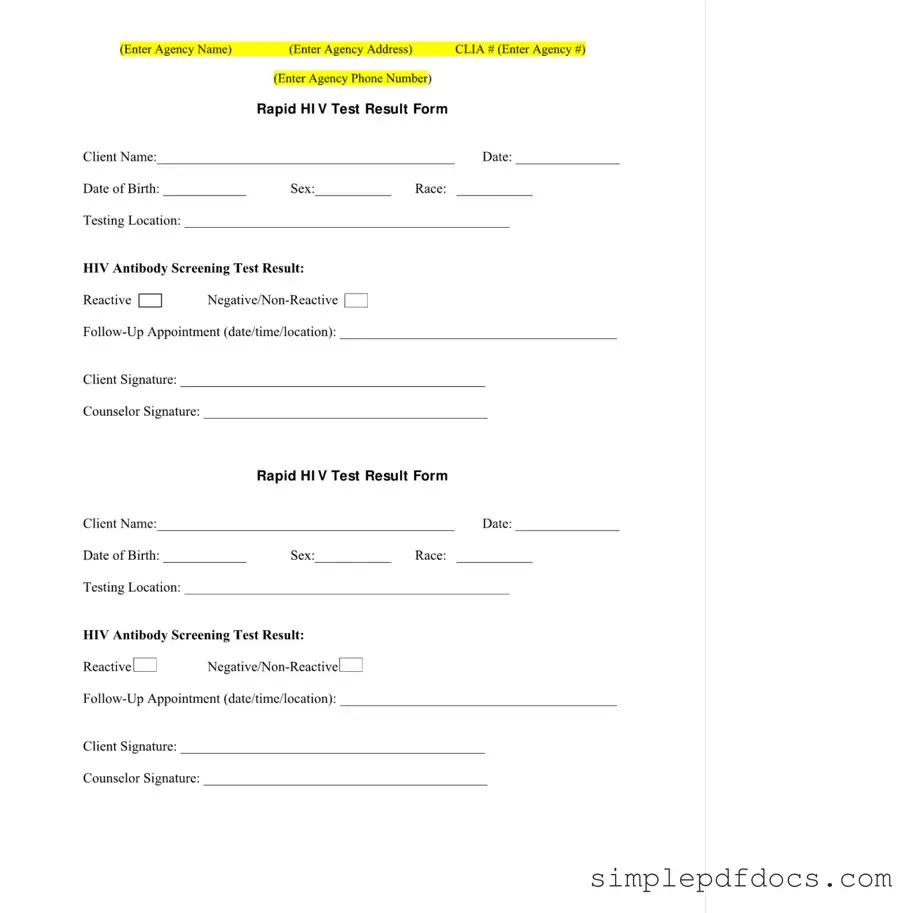Fill Your Negative Hiv Test Form
The Negative HIV Test form serves as an essential document that records the results of an HIV antibody screening test. This form not only provides critical information about the client, including their name and testing location, but also indicates whether the test result is reactive or non-reactive. Understanding this form is vital for clients and healthcare providers alike, as it plays a significant role in managing health and ensuring appropriate follow-up care.
Get Document Here
